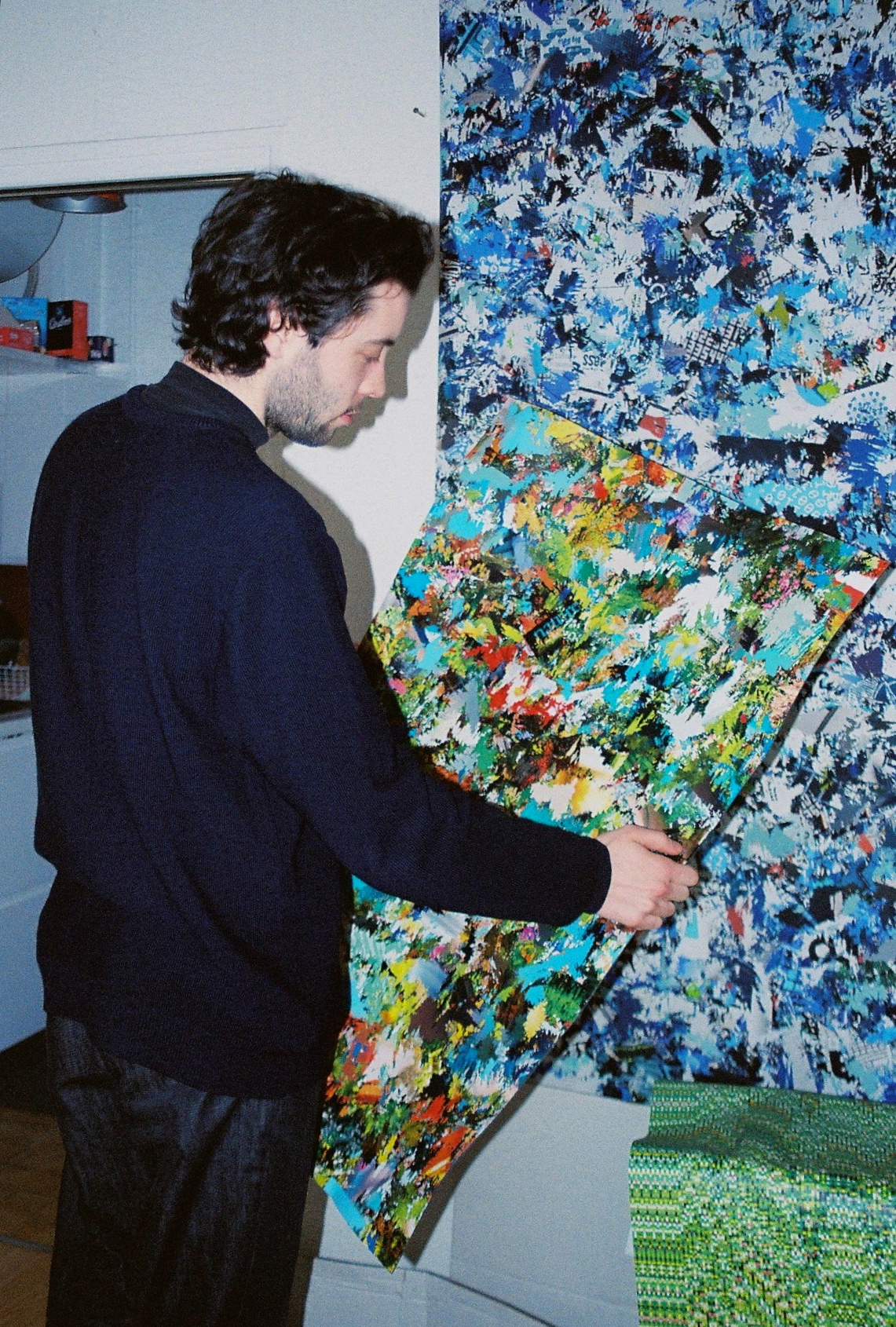Collectionair Journal | En | 2017
Mathieu Merlet Briand is a modern-day alchemist. The Paris-based artist transforms immaterial Google data into 3D sculptures reminiscent of prehistoric geological treasures. We stopped by Mathieu’s studio to ask him about his thoughts on the materiality of online content, the future of algorithms and the pseudo-spiritual relationship humans have developed with the Internet.
What sparked your initial interest in the materiality of Internet data?
Throughout my studies at the École nationale supérieure des Arts Décoratifs, where I completed a Masters in Product Design, I was really fascinated by the creative possibilities of recycled material. When I joined the ENSAD Lab – a research program operating within my alma mater – in 2013, I began looking into the ways Internet material could be recycled and transformed. Being surrounded by engineers and programmers inspired me to start developing algorithms capable of generating texture from online data.
Your practice essentially revolves around the idea of taking something ever changing and intangible – the Internet – and converting it into stable and tangible objects. Does your process stem from a desire to conserve the Internet and create a permanent trace of ephemeral digital matter?
Yes, absolutely. We all see Internet data as durable, everlasting. But in reality, the Internet is quite fragile and data can easily be lost. When you think about how little knowledge we have of where our data is stored, the Internet takes on this incredibly mysterious and obscure dimension. My work is an attempt to crystallize mass data, to create physical fragments of this infinite world we know very little about.
It’s interesting that you use the term “crystallize” to describe your practice because your sculptures have a mineral aspect reminiscent of prehistoric gems.
I’m very interested in the way matter is made. Matter is the outcome of long periods of sedimentation. The data I use to create my work is the direct result of statistics, and statistics are related to the passing of time. By using algorithms to agglomerate images, I’m trying to sediment this data, to sediment the Internet.
Beyond using the Internet as a primary source of material for your sculptures, do you take pleasure in endlessly browsing the web?
I really love exploring the Internet. I’m fascinated by all the knowledge we can access through a small screen. I’m still amazed at the fact that we see any street in the world without having to physically move. It’s almost as though humans have acquired a god-like superpower. When I browse the Internet, I feel as though I’m experiencing infinity. It’s an infinite material. In a pre-Internet world, when you would search for something in a library, for example, you had to know exactly what you wanted before beginning to look for information. Today, by only providing Google with a vague idea of what you are looking for, you can immediately access a ton of content, pinpoint what you need and even go beyond your initial search inquiry.
As algorithms become more sophisticated and capable of specifically decoding what users want, do you think we will be faced with less and less data in the future?
The Internet filters our reality and what we can see. But this filtration depends on our cookies, our profiles, etc. I’m pretty sure that the content I access online is not the same as what other people see. But I can’t know this for sure. There is this constant relationship between illusory phenomena and the Internet. You put you data in a cloud, an “invisible” cloud, somewhere far away…
Once again, this idea of “the cloud” is very spiritual. When you think of clouds you think of heaven, something that you can’t see but think you can sense.
Yes, that is why I try to make elements that suggest the idea of a temple and ultimately question who or what is considered as the “God” of today. I started looking into this topic after reading the work of French writer and journalist Ariel Kyrou. We share our feelings with Google, we ask it questions that we sometimes refrain from sharing with the humans around us. The Internet has become a new religious site, a space for a new form of spirituality.
Considering that your main material is digital but the final form of your art is sculptural, would you describe yourself as a digital artist or a sculptor?
I generate texture, which is the core of my practice. I then print this texture onto surfaces to create installations, sculptures, and videos. Everything I do is linked to digital texture, which is my primary material. My tools are algorithms, which are quite difficult to manipulate. I spend a lot of time trying to figure out the best parameters to generate the fine texture you see in my work. This whole process is another way of conceiving the act of creation.

CONTACT ︎
mathieumerletbriand.news@gmail.com
© Mathieu Merlet Briand studio

